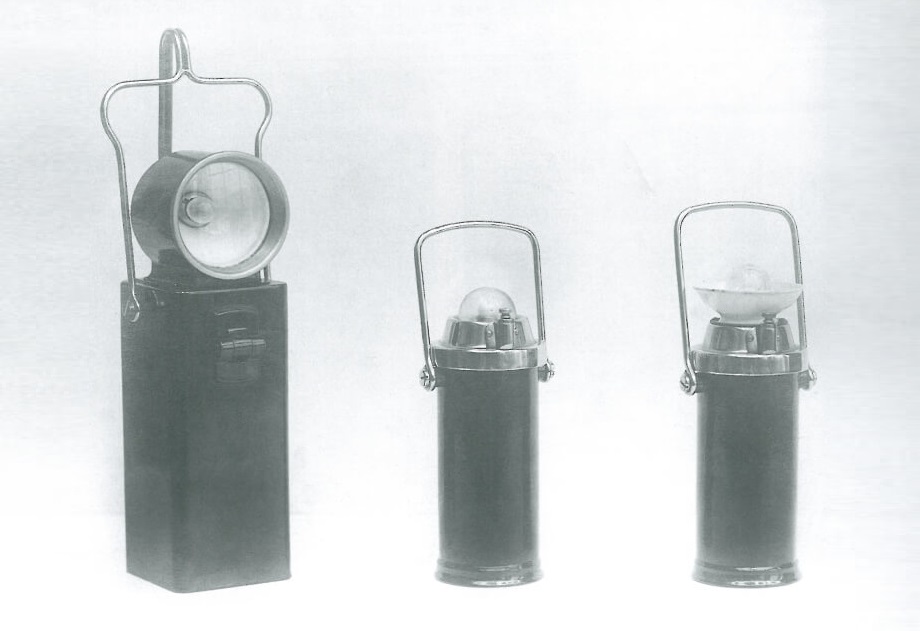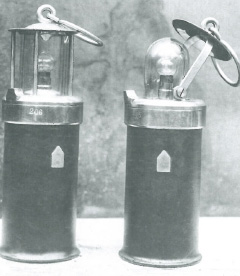Bringing Light into Darkness. The History of GAZ part I
History
January 3. 2024
2 min.
GAZ, or rather its predecessor company, used to be a world leader in a very different industry than it is now. Nevertheless, it is some 125 years already since batteries are manufactured in Zwickau.

The history of GAZ dates back all the way to 1882 when a Saxon engineer by the name Carl Wolf invented a gasoline-powered safety miner's lamp. Built on the proven design of the Davy lamp, a wick lamp with the flame enclosed inside a mesh screen, Wolf's patented device burnt gasoline instead of vegetable or other oil, shining brighter while not giving off as much smoke. Furthermore, the new lamp was more reliable in indicating impending firedamp explosions, at least such caused by coalbed methane.
In 1884, Wolf and his business partner Heinrich Friemann founded the company that was to become GAZ. Soon, Friemann & Wolf, or FrieWo, manufactured not only Wolf's own invention, but several other types of safety lamps including those burning carbide. However, if the mesh screen or glass cylinder of a flame lamp was damaged, it itself became a safety hazard, igniting flammable gases which collected in mines, causing explosions.
And, most importantly, advances in electrotechnics allowed for electric lighting to take over even deep underground. First electric hand lamps equipped with a non rechargeable dry zinc-carbon cell appeared as soon as mid-1880 and precisely for usage in mines. The first such lamp made by Friemann & Wolf was introduced in 1900, or possibly even a year earlier. The device weighed 3.18 kg, roughly four times as much as a comparable gasoline lamp and required significantly more maintenance.
Going electric
Nevertheless, in 1910, FrieWo published probably the first ever product catalogue in the given industry which featured electric miner's lamps only. These were equipped with lead-acid batteries, but at that time, the company already experimented with nickel-cadmium cells as well. The first 'Wolf's Alkali-lamp, the best and most economical electric miner's lamp' powered by a Ni-Cd battery entered production in 1913.
Compared to earlier designs, it produced more light, while being significantly more durable, as the Ni-Cd electrodes lasted ten times longer than lead-acid cells of the time. The latter also being prone to self-discharge and gas evolution while charging, relatively heavier, and more costly as well. Admittedly, Wolf's Alkali-lamp Nr. 950 wasn't a lightweight either, weighing 5-6 kg. But it could burn for up to 18 hours, an unprecedented value back then, winning industry awards and being widely regarded as the best electric miner's lamp on the market.
So, while in the first two years of production, FriWo manufactured only 30 thousand Ni-Cd lamps, by 1923, almost a quarter of a million of these devices were sold. Despite the fact that FriWo lost several subsidiaries, or markets respectively, as a result of the Versailles Treaty following Germany's defeat in WWI. It was around that time, or in early 1920, when FriWo began to slowly shift from manufacturing mining equipment to focusing on lighting and battery technology.
Want to know more? This is just the first of a series of articles covering the fascinating history of FriWo/GAZ which spans almost a century and a half. But if you just can't wait for the next installment, you may check GAZ' Wikipedia page.
Related articles
The First Rechargeable. A brief History of Lead-acid Batteries
December 12. 2024
3 min.
MoreComing Back Stronger. The History of GAZ part IV
November 21. 2024
2 min.
MorePowering the Workers' Paradise. History of GAZ part III
July 11. 2024
2 min.
MorePowering Innovation from a Clay Jar
May 21. 2024
2 min.
More



